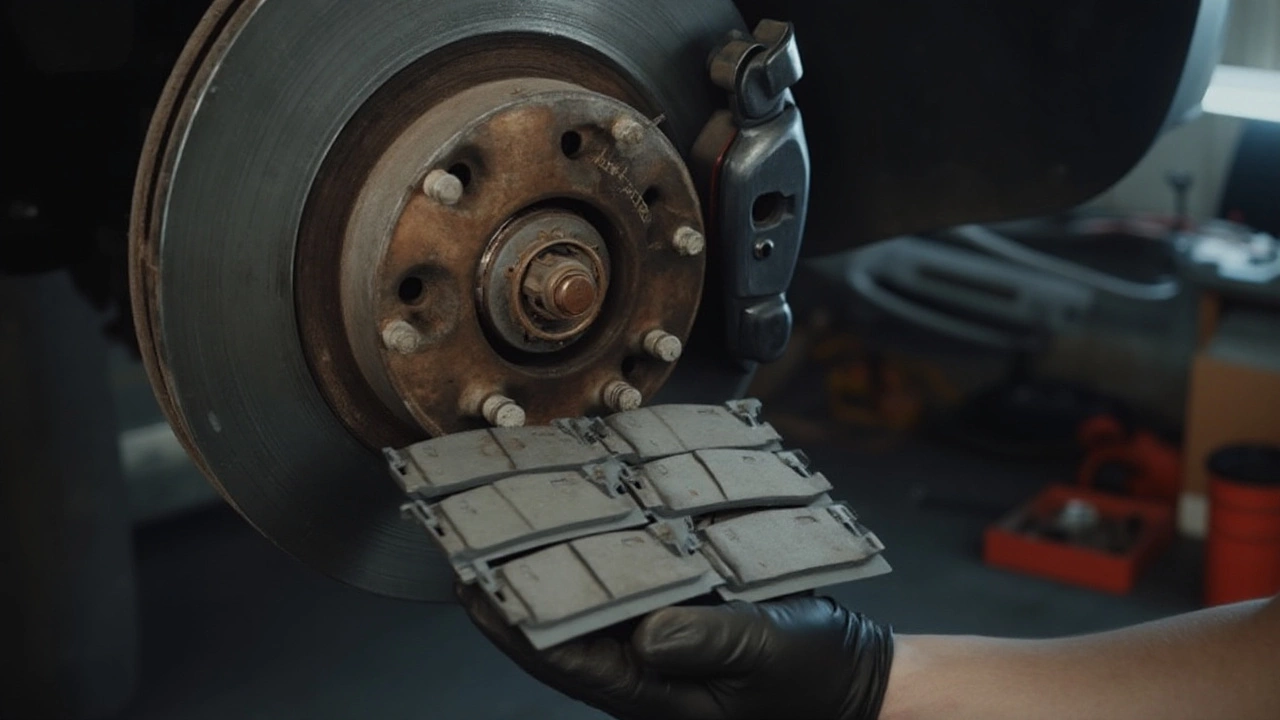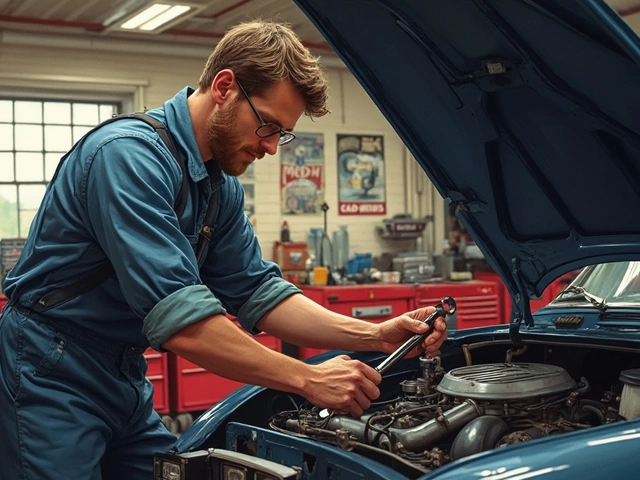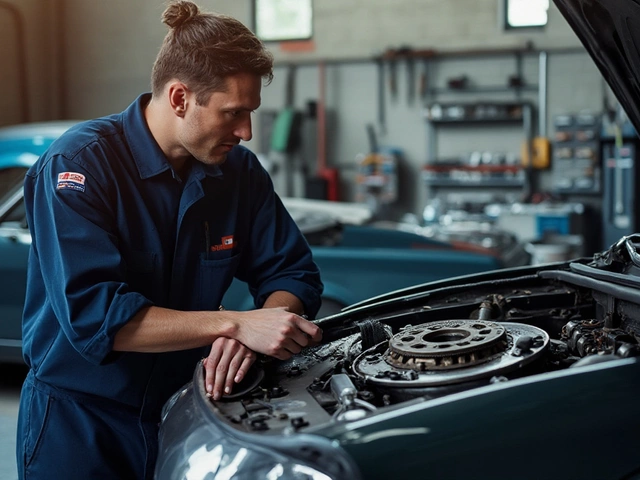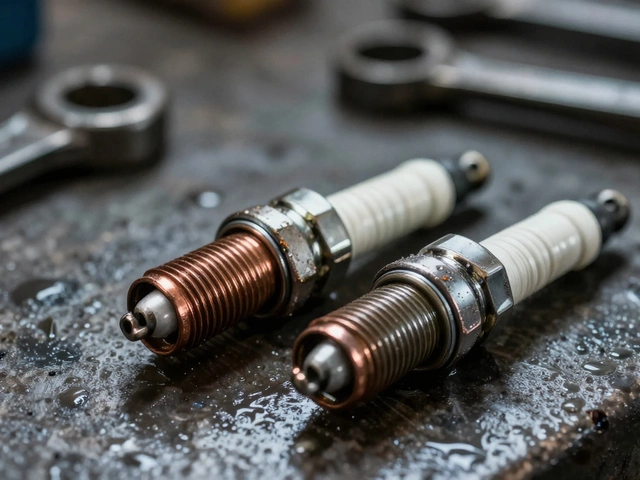In the world of car ownership and maintenance, brakes are fundamental to safety and peace of mind. Yet, the question that often puzzles many is whether it's genuinely necessary to replace all four brake pads at once.
Delving into this topic, we uncover both practical tips and expert insights surrounding brake pad replacement. With cars being an integral part of our daily routines, understanding the intricacies of their maintenance can help save not just money but also ensure road safety.
While it might seem straightforward, figuring out when to change brake pads involves considering several factors. From the various signs indicating worn-out pads to the cost implications, there's much a car owner should know. Let's dive into this intriguing topic and shed light on why brake maintenance shouldn't be taken lightly.
- Understanding Brake Pads
- Signs That Brake Pads Need Replacement
- Pros and Cons of Replacing All Four
- Factors Influencing Brake Wear
- Cost-Benefit Analysis
- Expert Tips for Long-Lasting Brakes
Understanding Brake Pads
Brake pads are a critical component of many car brake systems, particularly in disc brakes, which are the most common type used in modern vehicles. Their main purpose is to convert the kinetic energy of a car into thermal energy through friction. When you press the brake pedal, the brake fluid transferred through the hydraulic system causes the brake pads to press against the rotors. These are the metal discs attached to your car's wheels. This contact creates friction, which slows down and ultimately stops the vehicle. Given their vital function in ensuring vehicle safety, the condition of the brake pads cannot be overstated. In fact, regular maintenance and checks are pivotal in preventing brake failure.
The material from which brake pads are made significantly influences their performance. They typically come in four varieties: organic, semi-metallic, metallic, and ceramic. Organic brake pads are made of materials like glass and rubber, bound together with resins, and are often quieter but wear out faster and produce more dust. Semi-metallic pads, which often include iron, copper, and steel, strike a better balance between performance and longevity, albeit with some increased noise. On the upper end of the spectrum, ceramic brake pads offer excellent performance, less dust, and reduced noise, though they tend to be more expensive. The choice depends on driving habits and environmental factors.
Brake pads are designed to work within specific temperature ranges and loads. When choosing brake pads, understanding these specifications can aid in selecting the right type for your vehicle's specific use. For daily driving, pads engineered for comfort and longevity might suit best. However, performance pads designed to withstand high temperatures might be more appropriate for racing or frequent mountainous drives. According to George Studebaker, an automotive engineer, "Choosing the right brake pads is like picking the right shoes; the fit and design matter greatly depending on the situation."
Moreover, the lifespan of brake pads varies, typically ranging between 30,000 to 70,000 miles depending on the type and driving conditions. Urban settings, with their frequent stopping and starting, usually demand quicker replacements compared to consistent highway driving. It's a good practice to visually inspect them at routine service intervals. Also, being attentive to the slightest changes in braking performance, such as a squealing sound or a spongy brake pedal, can indicate the need for immediate attention and possible replacement.
Several factors can influence brake pad wear. Driving habits are among the most significant. Aggressive braking, for instance, subjects pads to higher stress and temperatures, accelerating wear. The operating environment, as mentioned, also plays a crucial role. Humid or dusty conditions might lead to faster degradation. Furthermore, the weight of the vehicle and the load it carries are crucial determinants. A heavier vehicle or one often loaded fully will naturally place more stress on brake components.
Understanding the intricate functionality and requirements of brake pads can markedly enhance a car owner's perspective on vehicle maintenance. By acknowledging the nuances in material composition, environmental influence, and personalized driving habits, one can make informed decisions about brake pad replacement and care that directly translates to safer driving experiences.
Signs That Brake Pads Need Replacement
When it comes to maintaining your vehicle safety, recognizing the signs that your brake pads need attention can make a world of difference. The brake system, often taken for granted, acts as the first line of defense in preventing accidents. A crucial component, brake pads experience the harshness of speed and force, thus taking on considerable wear and tear over time. A key sign to be aware of is the unmistakable screeching sound that emanates from worn brake pads. This high-pitched noise isn't just any vehicle whisper; it's the brake pads calling out for immediate attention. But why exactly do they make such a noise, you might wonder? Well, most brake pads come with a built-in indicator, often a metal shim, that chirps in response to friction as the padding wears down.
In addition to auditory signals, visual inspections often reveal the state of your brake pads. By simply peering through the car’s wheel spokes, one can assess the thickness of the pads. If they appear to be less than a quarter of an inch thick, it might be time to consider a replacement. Another noteworthy aspect is the feel of the brakes. If the pedal pulsates or feels spongy upon engagement, these could be harbingers of a deeper issue, possibly signaling the need for a brake pad change. Uneven wear on the rotors, indicated by a wobbly braking experience, can also point to compromised brake pad condition. Such symptoms should never be ignored, as they could escalate into severe damage or even failure of the braking system.
According to the Royal Society for the Prevention of Accidents: "Regularly checking and maintaining vehicle brakes is crucial for avoiding traffic mishaps and ensuring road safety."
Beyond sight and sound, the car’s response during stops speaks volumes. Should the vehicle take longer distances to come to a halt than usual, this increase in stopping distance could indicate diminished brake efficiency due to worn pads. A dragging sensation while driving, as if something’s holding the car back, also points toward faulty or sticking brake calipers, which could be a result of worn-out pads. Such sensations are not just off-putting; they potentially endanger the driver and passengers, urging an immediate check-up. Additionally, if the vehicle pulls to one side while braking, it might suggest uneven brake pad wear, calling for an urgent look-see.
An often-overlooked yet important indicator lies in the warning lights on the dashboard. Most contemporary cars are equipped with sensor systems that alert the driver when the brake pads require attention. Ignoring this can culminate in substantial repair costs later. For those keen on understanding more through concrete data, consider these sobering statistics: the average lifespan of brake pads varies significantly based on driving habits, typically ranging from 25,000 to 65,000 miles. Factors like driving in hilly terrain or aggressive braking can significantly shorten their lifespan.
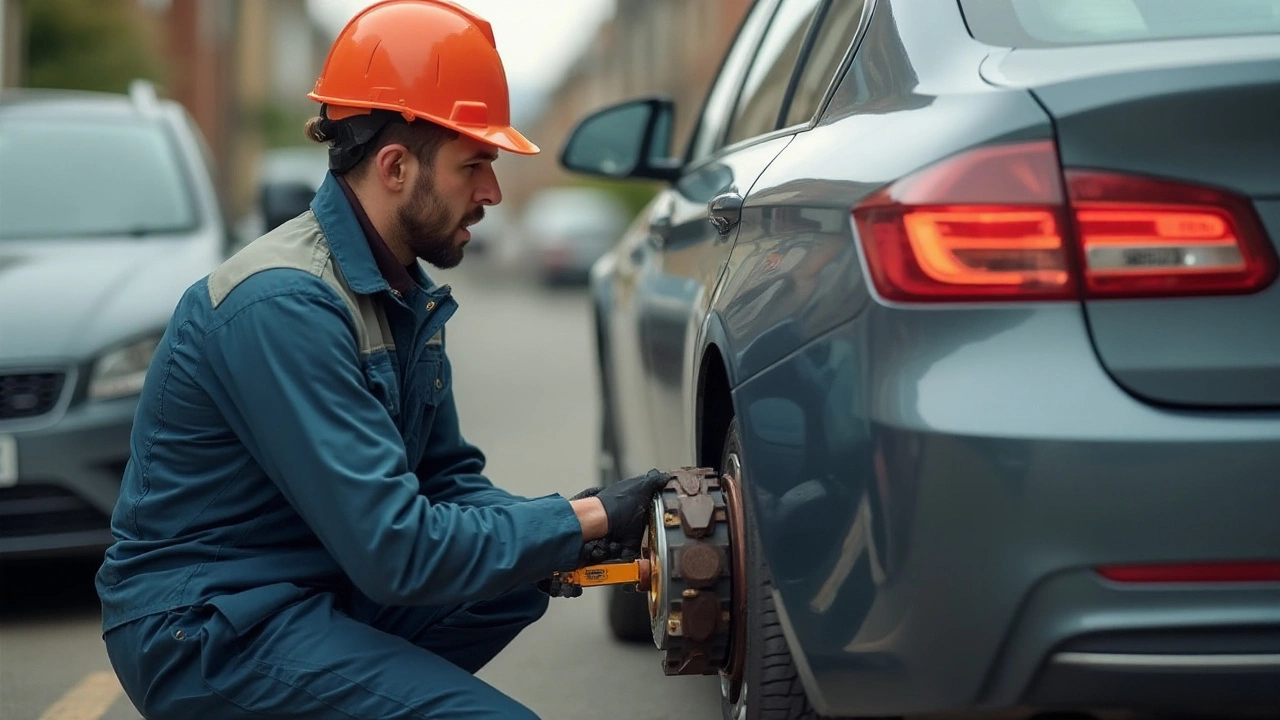
Pros and Cons of Replacing All Four Brake Pads
When it comes to vehicle maintenance, the decision to replace all four brake pads at once can seem daunting, especially to those who start navigating the world of car upkeep. Some car owners prefer to swap all four at the same time for simplicity and peace of mind, while others advocate for a more selective approach. Understanding the nuances of this decision is crucial for maintaining the performance and safety of your vehicle effectively.
The primary advantage of replacing all four brake pads simultaneously is ensuring uniformity in brake response and performance across the vehicle. Consistent wear and performance across all four wheels contribute to balanced braking, which is paramount to vehicle control, especially in sudden stops or emergencies. By changing all pads at once, you potentially avoid disparities in braking, which can arise if only the front or rear pairs are replaced. Consistency in brake pad thickness and material helps in achieving even tire wear and can considerably extend the life of your tires too. Having balanced braking can also enhance the longevity of other brake system components, as balanced braking reduces uneven stress and wear on the system.
In contrast, there are significant considerations and potential drawbacks to this uniform approach. The expense is a notable one; replacing all four brake pads can be costly, especially when not all pads exhibit significant wear at the same time. With labour rates and the price of brake pads, the costs can quickly add up. For instance, high-performance brake pads or those specific to certain models could carry a premium price tag. Some industry enthusiasts suggest a more strategic method—replacing pads as needed, which can be a more economical option in the short term. Additionally, if you have recently replaced a pair of brake pads, renewing them prematurely might not be financially wise. This approach also allows for more frequent attention to and inspection of your brake system, promoting regular maintenance checks.
Environmental and Practical Considerations
There is also an environmental consideration that comes into play. By replacing only those brake pads that are worn out, you reduce waste and make a more environmentally conscious decision. This approach ties into a broader cycle of sustainable car ownership. Scrapping pads that still have usable life contributes to unnecessary waste and may not be the most environmentally friendly approach. The modern driver often considers the environmental impact of their vehicle choices, making this a valid aspect to contemplate.
On the practical side, the driving conditions, vehicle type, and driving style have a pronounced effect on brake pad wear. For city dwellers who deal with stop-and-go traffic, brake pads tend to wear out quicker. Conversely, those who spend more time on motorways might find their brake pads lasting considerably longer due to less frequent braking.
"Driving habits are the largest contributing factor to brake pad wear," says James Mitchell, a respected automotive engineer. "Understanding your driving environment is key to anticipating your brake maintenance needs."With this knowledge, a tailored approach to replacing brake pads may often prove more practical. It allows vehicle owners to assess their specific situation, weigh the costs and benefits, and make informed decisions without overspending.
Ultimately, whether you decide to replace all four brake pads or just the ones in need, both paths underline the importance of maintaining a safe and efficient braking system. Knowing the condition of your brake pads and being aware of the signs of wear can empower you to make the best decision for both your vehicle and your budget.
Factors Influencing Brake Wear
Understanding what influences brake pad deterioration is vital for any car enthusiast. Various elements contribute to how quickly brake pads wear out, and being aware of these can help in maintaining your vehicle more effectively. One of the major factors is the type of driving you do regularly. City driving, with its constant stopping and starting, can wear down brake pads much faster than highway driving, which allows for smoother stops. The friction and heat generated during stop-and-go traffic are particularly taxing on the braking system.
Another influential factor is the terrain on which you usually drive. Hilly or mountainous areas require more frequent braking, which naturally leads to quicker brake wear. On such terrains, you're often relying heavily on your brakes to control your speed, adding stress to the system. This is something city dwellers might not experience as intensely. Besides the terrain, the quality of the press on the brake pedal can also affect wear. Aggressive or sudden braking increases the strain and can lead to uneven wear on your brake pads.
Vehicle weight also plays a significant role. Heavier cars place more pressure on brake pads with every application due to their need to dissipate additional kinetic energy. Thus, a family SUV will likely experience brake wear more quickly than a lightweight sports car if both vehicles are driven under similar conditions. It's interesting to note how minor habits, like driving with a rooftop cargo box, can add weight and affect brake life.
Material composition of the brake pads themselves is another crucial factor. Different materials, such as metallic, ceramic, or organic, have varying lifespans and heat dissipation properties. While ceramic pads may offer a longer life span, metallic pads might provide better heat resistance and stopping power. Yet, each type comes with its trade-offs, so understanding what suits your driving needs is essential. As an automobile expert once said,
"Choosing the right brake pad is like choosing the right shoes; it must fit well with your journey and style."
Environmental conditions, like extreme temperatures and humidity, can have an impact. Regular exposure to elements such as rain, ice, or excessive heat can lead to faster degradation. Brakes in colder regions need to work harder initially, while those in extremely hot climates risk losing efficiency due to heat exposure. It's fascinating how something as simple as weather can play a part in the longevity of your vehicle parts.
Lastly, the condition of other car components can contribute to brake pad wear. Misaligned wheels, for instance, can put uneven pressure on brake pads, leading to faster wearing on one side. Neglecting regular checks and balances for your vehicle might result in premature failure of even the most well-crafted parts. Addressing these aspects can help prevent unnecessary wear and ensure your vehicle's braking system remains efficient for longer.
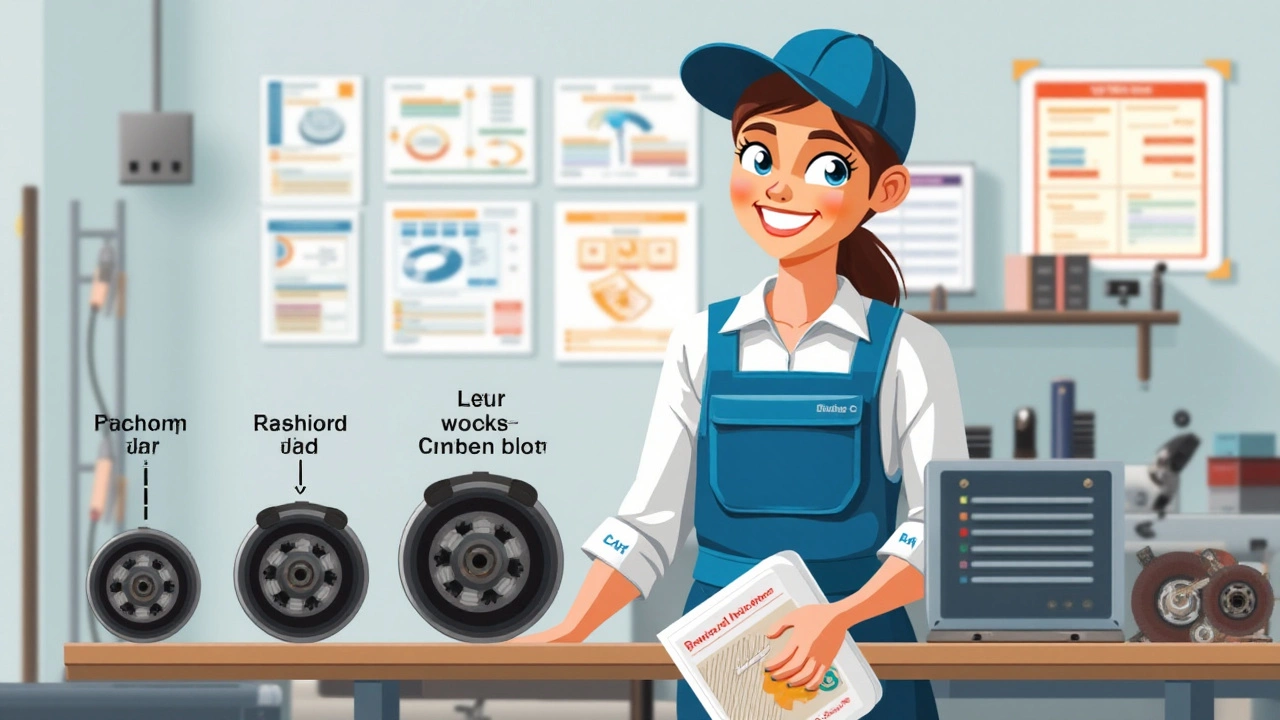
Cost-Benefit Analysis
When it comes to maintaining your car, the decision to replace all four brake pads at once isn’t just a matter of preference. It requires thoughtful consideration of both costs and benefits. Delving into the financial side first, replacing all four brake pads can seem a tad expensive compared to simply swapping out just one or two. The average cost for a complete set, including labor, might hover around £150 to £300, varying based on your vehicle's make and model, and whether you're opting for premium parts. But what do these expenses buy you? Primarily, they ensure that your car’s stopping power is equally distributed, which significantly improves the overall safety and performance of your vehicle.
One must consider the hidden benefits of such an investment too. By ensuring that all brakes wear evenly, you'll avoid uneven tire wear, which can be an additional costly affair if not addressed promptly. Uneven brake wear could lead you to face further complications that affect your vehicle’s alignment and suspension systems. Besides the apparent safety aspects, there is also the issue of peace of mind. Knowing that you’ve attended to all brake pad needs allows for worry-free driving and fewer unpredictable expenses popping up in the future. This proactive maintenance prevents accidents caused by uneven braking pressure, saving hefty hospital or repair bills.
It's equally important to take into account the enhancements in vehicle performance that come from changing all four brake pads. Performance is not only about speeding up but also about how effectively your car can come to a stop. Quality brake pads have added technology like noise-dampening shims and coats that reduce corrosion. This not only extends the brake pad's life but optimizes its function during various weather conditions. Statistics show that vehicles maintained with an eye on comprehensive brake health have fewer emergency room visits due to car-related injuries.
According to the RAC, maintaining brakes properly not only ensures safety but can also lead to improved resale value. "A well-maintained car is always a better investment in the long run, with proper maintenance driving up its resale value," stated a report on car safety.
Before making the decision, one crucial piece of advice is to conduct routine checks. Vehicles used mainly in urban areas with stop-and-go traffic might need frequent assessments than those usually driven on highways. To sum up, evaluating the need to change all four brake pads isn’t merely a financial decision but a holistic approach to vehicle maintenance. In essence, the brief jump in immediate costs is often shadowed by long-term savings and enhanced safety, presenting more than just a suitable argument but a sensible investment in your vehicle's and personal protection.
Expert Tips for Long-Lasting Brakes
When it comes to keeping your brake pads in optimal condition, preventative care and timely maintenance are key. A proactive approach not only saves you significant repair costs but also enhances your vehicle safety. Surprisingly, small habits can make a big impact. One of the most effective ways to ensure longevity is by adopting a smoother driving style. This means anticipating stops and gradually reducing speed rather than coming to an abrupt halt. By doing so, you can minimize the wear and tear on the pads, allowing them to last significantly longer.
In addition to driving habits, another factor that can influence the lifespan of your car's brakes is the weight of the vehicle. The heavier the vehicle, the more pressure is required to bring it to a stop. Therefore, reducing unnecessary weight in your car can contribute to longer brake life. Regularly checking tire pressure is also crucial. Under-inflated tires create more friction, which in turn puts more strain on the brakes. Keeping tires inflated to the recommended pressure can lighten the workload on your brakes, allowing them to function more efficiently.
Brake fluid maintenance can't be overlooked either. Regularly checking and replacing the brake fluid ensures the hydraulic system operates smoothly and effectively. Dirty or old fluid can corrode the brake system components and lead to costly repairs. For those not familiar, refer to your vehicle's manual to determine the correct replacement intervals for your specific car model. A lesser-known tip is to listen to your car. Modern cars are equipped with indicators that make noises when pads are wearing thin. Noticing these signs early can prevent further damage.
Routine inspections by professionals can also go a long way. Many drivers are unaware of the nuances of the braking system, so having experts take a look can identify potential issues before they become severe. It's worthy to note that while DIY brake pad replacements are possible, having a trusted mechanic handle replacements could provide peace of mind. This is especially true for vehicles with complex braking systems or for those who aren't comfortable handling car repairs on their own.
To underline this, according to the UK Vehicle Service Centre Association, regular maintenance can extend brake life by up to 30%.
"Regularly serviced brakes not only last longer but also dramatically reduce the risk of failures that could result in accidents," says James Weller, a seasoned automotive engineer.Additionally, replacing pads at recommended intervals, even if they aren't fully worn out, can maintain optimal performance of the entire braking system. While investing in routine checks does incur a cost, the trade-off is increased safety and reduced risk of unexpected breakdowns.
Finally, using quality brake components cannot be overstated. While budget options might seem attractive, investing in high-quality brake pads ensures better durability and performance. It's prudent to research and choose reputable brands that many in the automotive industry trust. Quality parts often come with excellent warranties, providing an added layer of assurance for car owners. Remember, cutting corners with inferior parts can lead to premature wear and even compromise vehicle safety.
